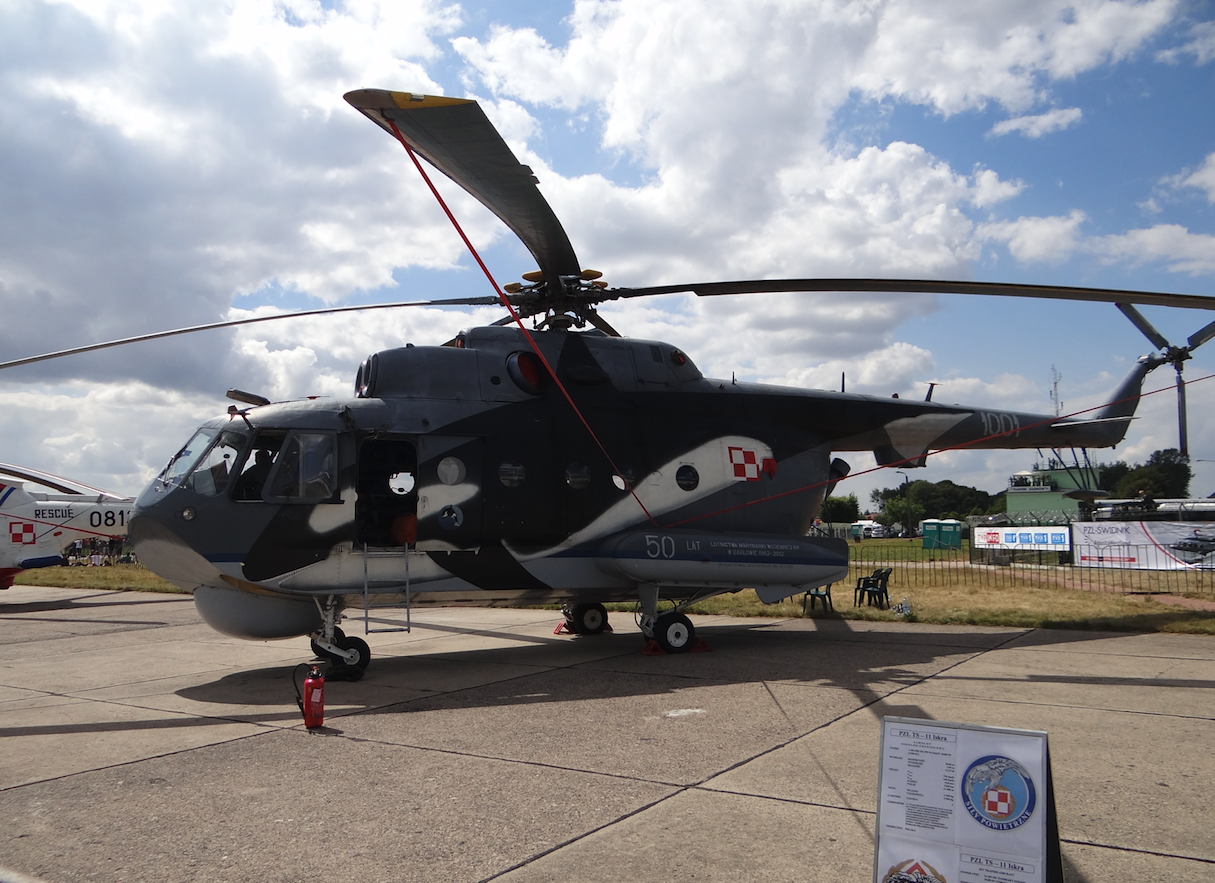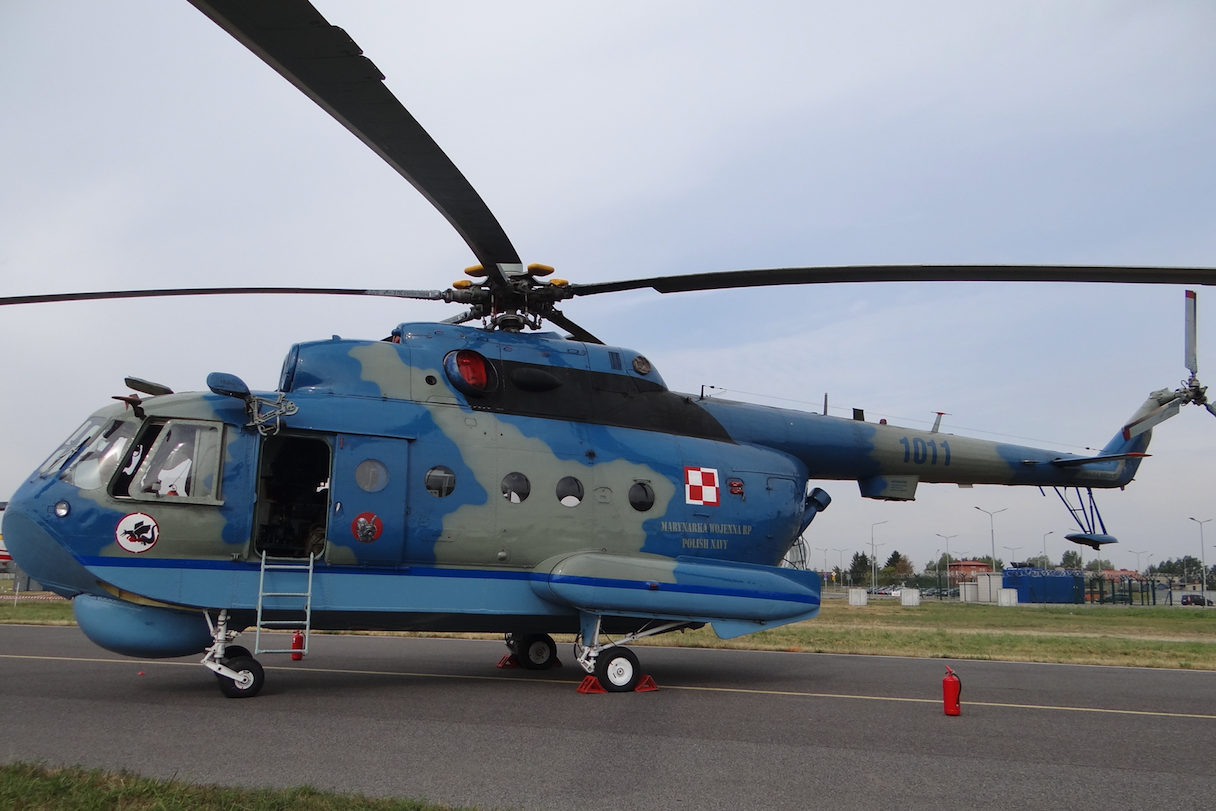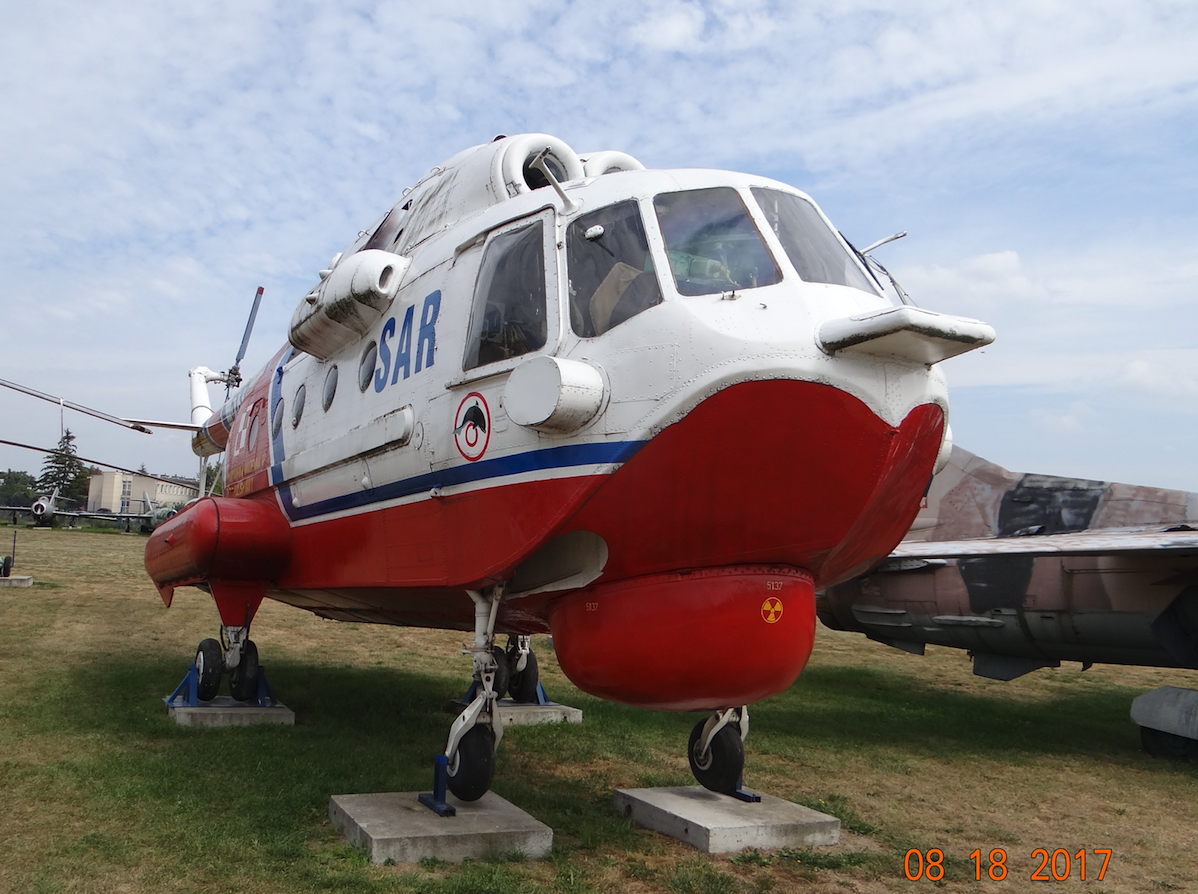Darłowo 2007-10-12
2 Dywizjon Lotniczy Marynarki Wojennej w Darłowie. 1962r.-1995r.
Historia
28 Eskadra Ratownicza w Darłowie. 1962 rok.
Zalety statków powietrznych, jakimi są śmigłowce w Wojsku Polskim dostrzeżono już w 50-latach. Stwierdzono, że doskonale nadają się one jako środek poszukiwania i ratowania rozbitków na morzu. Pojawienie się w produkcji seryjnej w CCCP śmigłowca Mil Mi-1 stworzyło realne możliwości wprowadzenia śmigłowców do służby w LWP (Ludowe Wojsko Polskie).
Zgodnie z zarządzeniem szefa Sztabu Generalnego z dnia 20 września 1962 roku, na lotnisku w Darłowie, z dniem 25 grudnia 1962 roku, sformowano 28. Eskadrę Ratowniczą. Eskadra utworzona została w ramach powietrznego systemu ratownictwa morskiego PMW (Polskiej Marynarki Wojennej). Początkowo na wyposażenie eskadry trafiły śmigłowce SM-1 i SM-2, będące licencyjnymi śmigłowcami Mil Mi-1, które produkowano w PZL Świdnik.
W 1965 roku, w 28. Eskadrze Ratowniczej utworzono klucz śmigłowców ZOP (zwalczania okrętów podwodnych), uzbrojony w zakupione w CCCP cztery śmigłowce Mil Mi-4 ME. W następnym roku, eskadra otrzymała pierwsze samoloty patrolowo-ratownicze An-2, a później śmigłowce ratownicze PZL Mi-2 RM.

16 Pułk Lotnictwa Specjalnego w Darłowie. 1983 rok.
Poważne zmiany w Darłowie zaszły na początku 80-lat. Pierwsze sześć śmigłowców ZOP Mi-14 PŁ przybyło do Darłowa w dniu 01 czerwca 1981 roku. Kolejne sześć samolotów dostarczono w dniu 29 października 1983 roku. Cztery ratownicze śmigłowce Mi-14 PS wylądowały w Darłowie w dniu 27 lutego 1984 roku. Wcześniej wycofano ze służby wszystkie śmigłowce SM-1/2 i Mi-4.
W związku z dużym wzrostem ilościowym statków powietrznych w Darłowie, dowódca PMW (Polskiej Marynarki Wojennej) polecił z dniem 01 grudnia 1983 roku, przeformować 28. Eskadrę Ratowniczą w 16. Pułk Lotnictwa Specjalnego. Nowo powstały pułk miał w swoim składzie dwie eskadry lotnicze: zwalczania okrętów podwodnych i ratownictwa. Pododdziały zaopatrzenia oraz łączności i ubezpieczenia lotów zostały rozwinięte do etatu batalionów.
16 Pułk Lotnictwa Specjalnego w Darłowie. 1988 rok.
W ramach reformy lotnictwa Marynarki Wojennej w dniu 1 lipca 1988 roku, w Darłowie został rozformowany 16. Pułk Lotnictwa Specjalnego. Jego pododdziały weszły w skład istniejącego 7. Pułku Lotnictwa Specjalnego w Siemirowicach. Ta sytuacja organizacyjna przetrwała do dnia 1 kwietnia 1991 roku, kiedy to powstała 40. Eskadra Śmigłowców Zwalczania Okrętów Podwodnych i Ratownictwa w Darłowie.
40 Eskadra Zwalczania Okrętów Podwodnych. 1991 rok.
Do nowej 40. Eskadry włączono wszystkie śmigłowce, a wszystkie samoloty An-2 pozostawiono w 7. Pułku Lotnictwa Specjalnego w Siemirowicach. Nowa jednostka, mimo formalnego etatu eskadry, pozostawiła w swoim składzie rozwinięte bataliony zabezpieczenia ( odpowiednie dla pułku ).
W 1994 roku, 40. Eskadra Śmigłowców Zwalczania Okrętów Podwodnych i Ratownictwa Marynarki Wojennej w Darłówku składała się między innymi z: Kluczy śmigłowców zwalczania okrętów podwodnych. Kluczy śmigłowców ratowniczych. Klucz techniczny. Batalion łączności i ubezpieczenia lotów. Batalion zaopatrzenia. 40. Eskadra, w dniu 01 stycznia 1995 roku, miała na swoim uzbrojeniu 19 śmigłowców: 6 śmigłowców ratowniczych PZL-Świdnik Mi-2 RM, 10 śmigłowców zwalczania okrętów podwodnych Mi-14 PŁ ( w tym 1 Mi-14 PX przystosowany do działań ratowniczych ), 3 śmigłowce ratownicze Mi-14 PS. Zadania 40. Eskadry dokładnie określa jej pełna nazwa. W kolejnych latach śmigłowce ratownicze Mi-2 RM, a w później ciężkie Mi-14 PS, zostały zastąpione przez ratownicze śmigłowce W-3 RM Anakonda. Na 40. Eskadrze oparto również punkt bazowania śmigłowców ratowniczych na zachodnim wybrzeżu Bałtyku (Dziwnów i Goleniów).
W tym czasie, w planie było wycofane ze służby śmigłowce ZOP Mi-14 PŁ. Możliwe było zastąpione ich przez nowe polskie śmigłowce ZOP Aligator zbudowane na bazie śmigłowca W-3 Sokół/Anakonda. Nowe śmigłowce ZOP Aligator nie zostały jednak zamówione i zbudowane.
40 Eskadra stacjonowała na lotnisku w Darłowie. Lotnisko było wówczas lotniskiem V klasy (piątej klasy). Główny pas startowy (RWY) o długości mniejszej od 900 m. Jako iż 40. Eskadra miała na uzbrojeniu tylko śmigłowce, dłuższy pas startowy nie był potrzebny. RWY mogły wykorzystywać lekkie samoloty transportowe PZL An-2 czy PZL An-28.
Śmigłowce ZOP 40. Eskadry miały jako godło czarnego aligatora niosącego dwie bomby, a śmigłowce ratownicze krzyż maltański oraz delfina z kołem ratowniczym.
W 1994 roku, 40 Eskadra Zwalczania Okrętów Podwodnych i Ratownictwa przemianowana została na 2. Dywizjon Lotniczy Marynarki Wojennej.



Dowódcy 40. Eskadry:
Kmdr pilot Roman Morawiec – 1991 – 1994 rok. Kmdr por. pilot Wiesław Kusalewicz – 1994 rok.
2 Dywizjon Lotniczy Marynarki Wojennej w Darłowie. 1994 rok.
W dniu 1 lipca 1997 roku, dywizjon w Darłowie posiadał w swoim składzie następujące śmigłowce: 3 śmigłowce ratownicze Mi-14 PS, 6 śmigłowców wielozadaniowych Mi-2 RM, 10 śmigłowców zwalczania okrętów podwodnych Mi-14 PŁ.
Zmiany w Lotnictwie Marynarki Wojennej po 1995 roku.
W 1994 roku, sformowano Brygadę Lotnictwa Marynarki Wojennej. Skupiła ona pod swoim dowództwem wszystkie oddziały latające i lotniska podległe Marynarce Wojennej. Historia Brygady jest opisana w inny rozdziale.
Opracował Karol Placha Hetman
